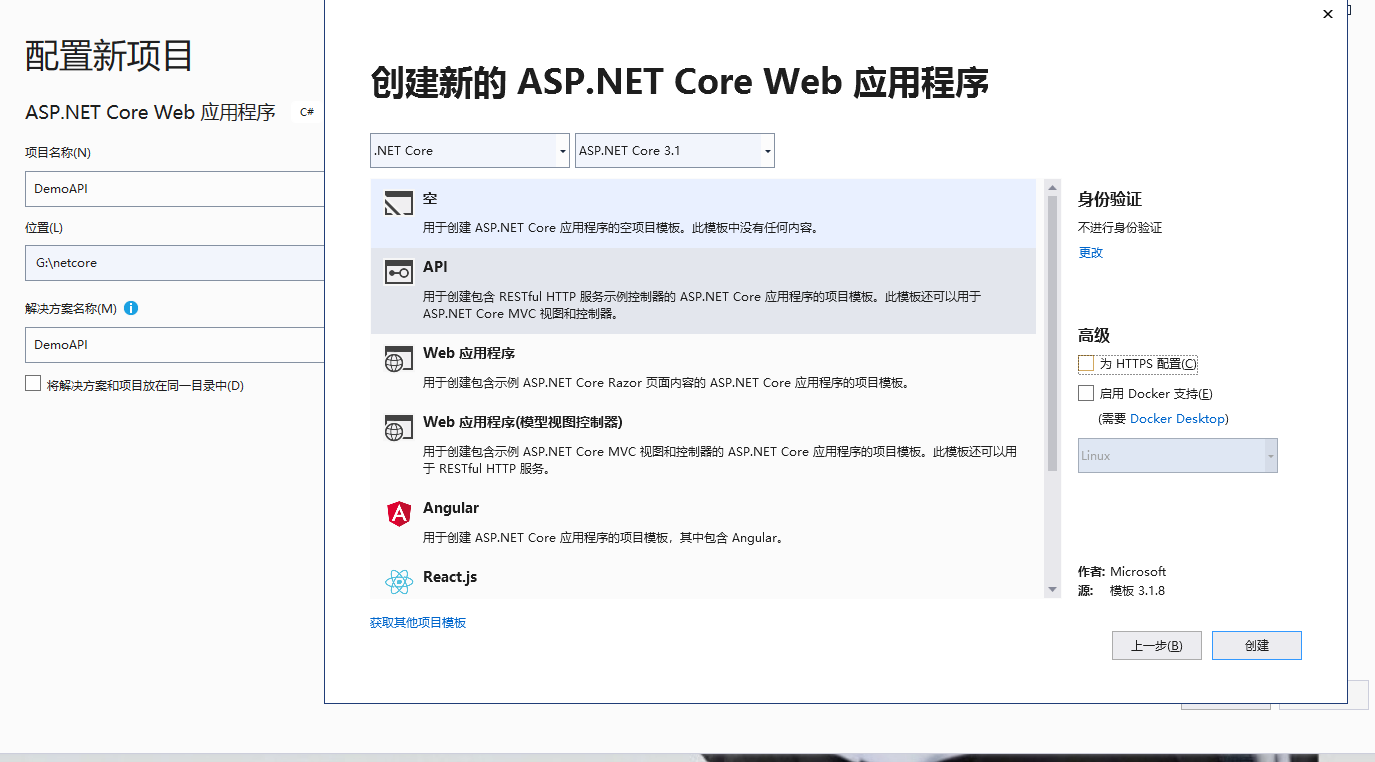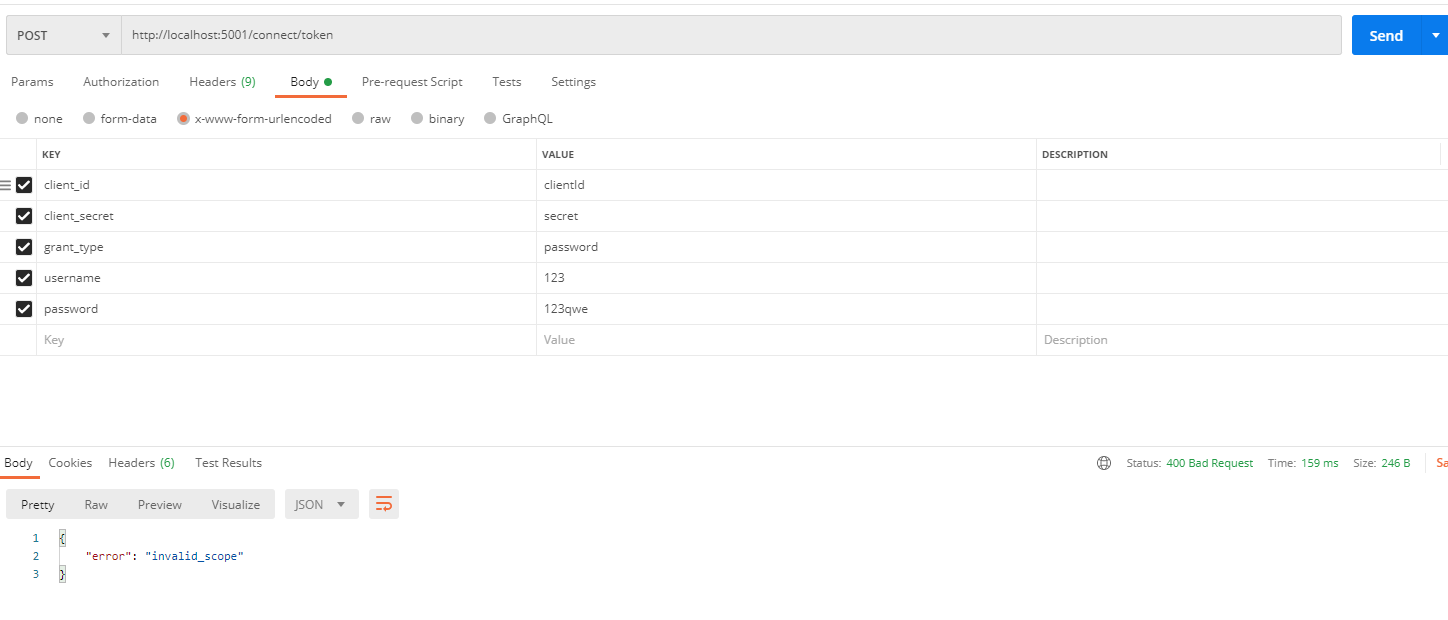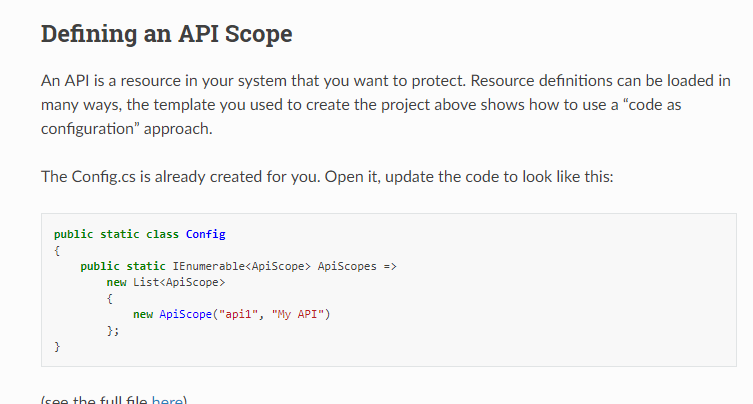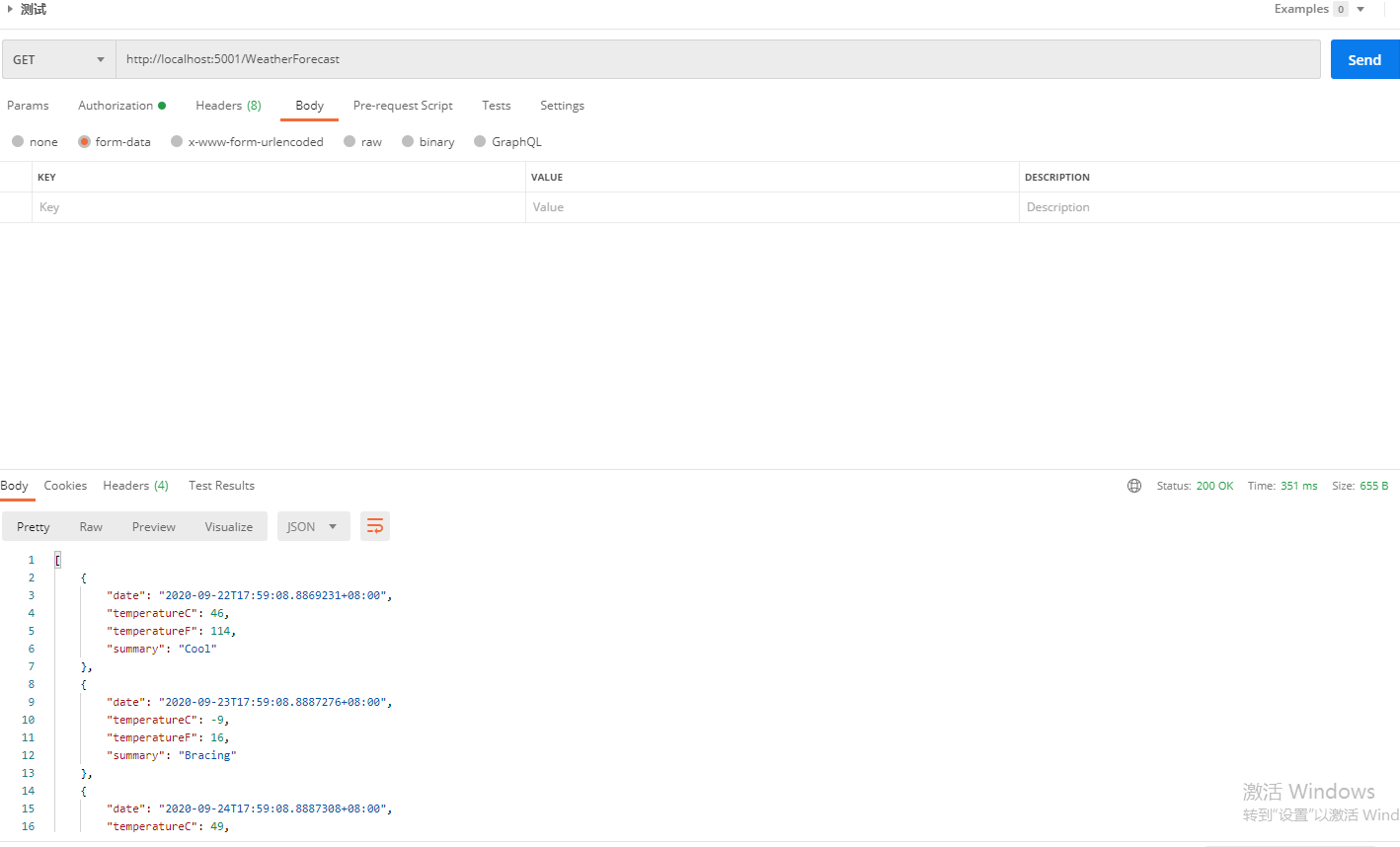IdentityServer4与API单项目整合(net core 3.X)
一、创建一个空的api项目

添加identityserver4的nuget包

配置config文件
public static IEnumerable<IdentityResource> GetIdentityResources() { return new IdentityResource[] { new IdentityResources.OpenId(), new IdentityResources.Profile(), }; } /// <summary> /// API信息 /// </summary> /// <returns></returns> public static IEnumerable<ApiResource> GetApis() { return new[] { new ApiResource(IdentityServerConstants.LocalApi.ScopeName), new ApiResource("manageApi", "Demo API with Swagger") }; } /// <summary> /// 客服端信息 /// </summary> /// <returns></returns> public static IEnumerable<Client> GetClients() { return new[] { new Client { ClientId = "clientId",//客服端名称 ClientName = "Swagger UI for demo_api",//描述 AllowedGrantTypes = GrantTypes.ResourceOwnerPassword ,//指定允许的授权类型(AuthorizationCode,Implicit,Hybrid,ResourceOwner,ClientCredentials的合法组合)。 AllowAccessTokensViaBrowser = true,//是否通过浏览器为此客户端传输访问令牌 AccessTokenLifetime = 3600*24, AuthorizationCodeLifetime=3600*24, ClientSecrets ={new Secret("secret".Sha256())}, //RedirectUris = //{ // "http://localhost:59152/oauth2-redirect.html" //}, AllowedCorsOrigins = new string[]{ "http://localhost:9012", "http://101.133.234.110:21004", "http://115.159.83.179:21004" }, AllowedScopes = { "manageApi", IdentityServerConstants.LocalApi.ScopeName }//指定客户端请求的api作用域。 如果为空,则客户端无法访问 } }; }
在Startup.cs中注入IdentityServer服务并使用中间件
//配置身份服务器与内存中的存储,密钥,客户端和资源 services.AddIdentityServer() .AddDeveloperSigningCredential() .AddInMemoryApiResources(config.GetApis())//添加api资源 .AddInMemoryClients(config.GetClients())//添加客户端 .AddInMemoryIdentityResources(config.GetIdentityResources())//添加对OpenID Connect的支持 //使用自定义验证 .AddResourceOwnerValidator<CustomResourceOwnerPasswordValidator>() .AddProfileService<ProfileService>();
//启用IdentityServer app.UseIdentityServer();
接下来,我们去实现CustomResourceOwnerPasswordValidator这个类
创建一个CustomResourceOwnerPasswordValidator类,继承IResourceOwnerPasswordValidator
public class CustomResourceOwnerPasswordValidator : IResourceOwnerPasswordValidator { public Task ValidateAsync(ResourceOwnerPasswordValidationContext context) { throw new NotImplementedException(); } }
接下来,我们就是些验证了
我们创建一个服务,去获取数据库里面的用户,验证是否有当前登录的用户
这里我们创建了一个userservice来验证我们的输入用户是否存在
public class UserService : IUserService { public async Task<TestPhoneUser> ValidateCredentials(string nameorphone, string password) { var dto= TestUser.FirstOrDefault(c => c.Phone == nameorphone && password == c.PassWord); if (dto != null) return dto; else return null; } public class TestPhoneUser { /// <summary> /// 唯一标识 /// </summary> public int Id { get; set; } /// <summary> /// 手机号 /// </summary> public string Phone { get; set; } /// <summary> /// 密码 /// </summary> public string PassWord { get; set; } } public List<TestPhoneUser> TestUser = new List<TestPhoneUser> { new TestPhoneUser { Id=1, Phone="12345678911", PassWord="123qwe" },new TestPhoneUser { Id=2, Phone="123", PassWord="123qwe" } }; }
现在,我们去完善CustomResourceOwnerPasswordValidator
public class CustomResourceOwnerPasswordValidator : IResourceOwnerPasswordValidator { private readonly IUserService _userService; public CustomResourceOwnerPasswordValidator(IUserService userService) { _userService = userService; } public async Task ValidateAsync(ResourceOwnerPasswordValidationContext context) { var dto = await _userService.ValidateCredentials(context.UserName, context.Password); if (dto!=null) { context.Result = new GrantValidationResult( dto.Id.ToString(), "pwd", DateTime.Now); } else { //验证失败 context.Result = new GrantValidationResult(TokenRequestErrors.InvalidGrant, "用户名密码错误"); } } }
再要配置profile
public class ProfileService:IProfileService { public Task GetProfileDataAsync(ProfileDataRequestContext context) { context.IssuedClaims = context.Subject.Claims.ToList(); return Task.CompletedTask; } public Task IsActiveAsync(IsActiveContext context) { context.IsActive = true; return Task.CompletedTask; } }
注入刚刚添加的服务
services.AddScoped<IUserService, UserService>();
services.AddScoped<IProfileService, ProfileService>();
在Startup.cs中加入identityServer验证
//用户校验 services.AddLocalApiAuthentication(); services.AddAuthorization(options => { options.AddPolicy(IdentityServerConstants.LocalApi.PolicyName, policy => { policy.AddAuthenticationSchemes(IdentityServerConstants.LocalApi.AuthenticationScheme); policy.RequireAuthenticatedUser(); }); });
app.UseAuthentication();
postman测试

反复验证了很多遍,都没有问题(因为我之前core2.x的时候就是这样写的)
最后去identityserver官网,找到了问题所在

现在的资源都换成了apiscope
然后,我把ApiResource都换成了ApiScope然后再运行

ok,完美!!!(这个坑,坑了我一下午)
最后再给api添加验证就行了
[Authorize(LocalApi.PolicyName)]
访问api

访问成功
标签:
identityServer4






【推荐】国内首个AI IDE,深度理解中文开发场景,立即下载体验Trae
【推荐】编程新体验,更懂你的AI,立即体验豆包MarsCode编程助手
【推荐】抖音旗下AI助手豆包,你的智能百科全书,全免费不限次数
【推荐】轻量又高性能的 SSH 工具 IShell:AI 加持,快人一步
· 开发者必知的日志记录最佳实践
· SQL Server 2025 AI相关能力初探
· Linux系列:如何用 C#调用 C方法造成内存泄露
· AI与.NET技术实操系列(二):开始使用ML.NET
· 记一次.NET内存居高不下排查解决与启示
· 被坑几百块钱后,我竟然真的恢复了删除的微信聊天记录!
· 没有Manus邀请码?试试免邀请码的MGX或者开源的OpenManus吧
· 【自荐】一款简洁、开源的在线白板工具 Drawnix
· 园子的第一款AI主题卫衣上架——"HELLO! HOW CAN I ASSIST YOU TODAY
· Docker 太简单,K8s 太复杂?w7panel 让容器管理更轻松!